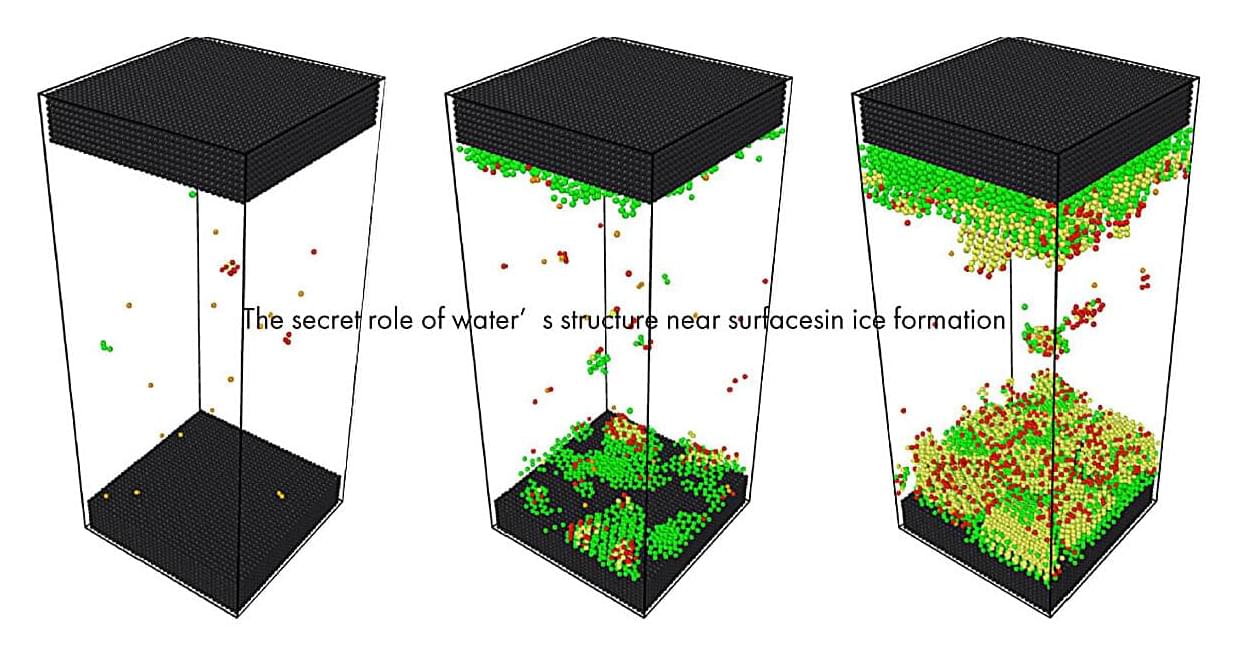Water is everywhere and comes in many forms: snow, sleet, hail, hoarfrost, and so on. However, despite water being so commonplace, scientists still do not fully understand the predominant physical process that occurs when water transforms from liquid to solid.
Now, in an article published in the Journal of Colloid and Interface Science, researchers from the Institute of Industrial Science, The University of Tokyo, have carried out a series of molecular-scale simulations to uncover why ice forms more easily on surfaces than in bodies of water.
While it is common knowledge that water freezes at 0°C (32°F), water does not instantly turn into ice the moment this temperature is reached. Instead, ice crystals begin forming at tiny “nuclei” and spread throughout the body of water in a process called nucleation. Lower temperatures promote nucleation events and hence speed up the freezing process. Although, at the microscopic level, other factors can also play a role.
